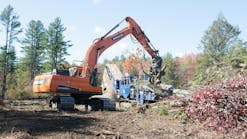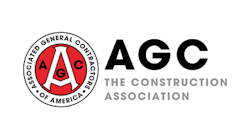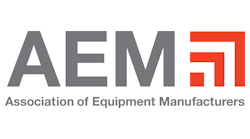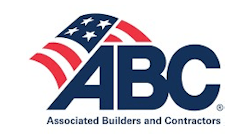Part of the process of preparing a construction site for winter is making sure equipment is ready for cold-weather operations or storage. Here are some tips from Earl Blanchette, commercial marketing manager with the lubricants division of Equilon Enterprises LLC in Houston, TX. Equilon Lubricants manufactures Texaco- and Shell-branded lubricant products.Winter OperationEngineFuel. A winter No. 1 – grade diesel or a 60:40 blend of No. 1 – and No. 2 – grade diesel can improve engine performance compared to a straight No. 2 grade in cold weather. Oil. For heavy-duty trucks and off-road construction equipment, an SAE 15W-40 mineral oil is a good choice when operating at air temperatures as low as about 5°F. “That same viscosity can be used in colder weather along with starting aids, such as an engine-block heater, or switch to an SAE 10W-30 mineral oil,” Blanchette says. “When working in prolonged temperatures colder than -25°F, an SAE 10W-30 synthetic mineral-oil blend or a full synthetic can provide better engine cranking and pumping characteristics.”Coolant. Use a refractometer to check coolant freeze protection. It’s more accurate than a hydrometer, Blanchette notes. A hydrometer can indicate more or less freeze protection than is actually available because of possible differences between the molecular weight of the ethylene glycol in the engine’s coolant compared to the ethylene glycol used to calibrate the hydrometer.Hoses and Belts. “It’s a lot more convenient to check the condition of hoses and belts and replace them, if necessary, while you’re checking the coolant, rather than waiting until the dead of winter to find out they have failed,” advises Blanchette.Transmission and Drive TrainChange the oil before cold weather sets in and before the oil has oxidized and lost the low-temperature viscosity needed in colder temperatures. Oils formulated to meet the Caterpillar TO-4 specification provide easier cold-weather start-ups, protect against oxidation, and improve wear and sludge control for longer fluid and equipment life, Blanchette points out. Depending on the application, an SAE 50 or SAE 60 grade may be used in the summer, while the SAE 10W or SAE 30 may be appropriate for cold-weather work. Typically, an SAE 10W-30 is used in colder climates.Gear oils, such as SAE 80W-90 and 85W-140, protect gear teeth in manual transmissions and differentials from pitting, spalling, and scoring and cover a wide range of ambient and operating conditions. Follow the equipment owner’s manual recommendations for cold-weather operation.Also, when equipment runs hot on a summer’s day then cools off at night, water can condense and contaminate the transmission and drive train oils. In some cases, when the oil does not emulsify water, water can drain off. Otherwise, remove water by draining and replacing the oil.Hydraulic OilMany pieces of construction equipment use SAE 10W motor oils year-round. For summer operation, some units may require an ISO VG 68 – grade industrial, antiwear hydraulic oil (viscosity between an SAE 10W and SAE 20W motor oil). That may change to an ISO VG 32 (between an SAE 5W and SAE 7W motor oil) in winter operations. Follow the equipment manufacturer’s recommendations.“Check the oil,” says Blanchette. “If it is not clean and dry, change it.”Grease-Lubricated EquipmentGrease carries the oil needed to lubricate various machine components. Most construction equipment uses mineral-oil greases. In most areas of the United States, an NLGI Grade 2 is normally used year-round. In Canada, Grade 1 is often used in the winter. It offers better pumpability and mobility in cold temperatures along with the same lubricating features.Grease containing molybdenum disulfide (moly) offers extra protection against shock-loading situations common to construction work. Heavy shock loading can temporarily rupture or squeeze out the lubricant film between metal surfaces, Blanchette explains. Moly grease prevents metal-to-metal contact. This material can also pay off when the equipment is operating in dirty conditions or when recommended regreasing intervals are not followed.Fall is a good time to purge bearings and ensure that grease systems are fully operative, he suggests.“Clean grease fittings before injecting the grease to prevent dirt and any other contaminants from entering the equipment,” Blanchette recommends. “Keep bearing housings one-third to one-half full of grease. Don’t overgrease, otherwise excess heat can build up. In addition to periodically relubricating with a grease gun or a centralized system, it’s also a good idea to completely clean bearing housings and pack them with fresh grease on an appropriate schedule.”Lubrication TruckRemove water in air lines used to pump grease. Using a lighter grade of oil in the winter can improve operation of pneumatic tools, such as rock drills or concrete breakers.Winter Storage of EquipmentReplace Old Oil With Fresh Oil“Contaminants from combustion in engine cylinders and blow-by can cause oil to oxidize, reducing its ability to lubricate,” states Blanchette. “Today’s oils have additives and rust inhibitors to slow the oxidation process and protect engine components against rust. However, oil can oxidize just by sitting there if most of the additives have been depleted and can no longer protect the equipment. Clean, fresh oil is the best protection.”Drain the old oil, recharge with fresh oil, and run the engine long enough to lubricate it. Then shut off the equipment engine, he suggests.Analyze the OilIf you want to take an oil sample while the oil is being drained, Blanchette advises waiting at least five seconds after it starts to drain. Otherwise you might also collect heavy metals or other deposits at the bottom of the oil pan. Also provide all the information needed to properly analyze the oil. That includes type of engine, total engine miles or operating hours, number of miles or hours the oil was used, type of oil, and oil manufacturer.








